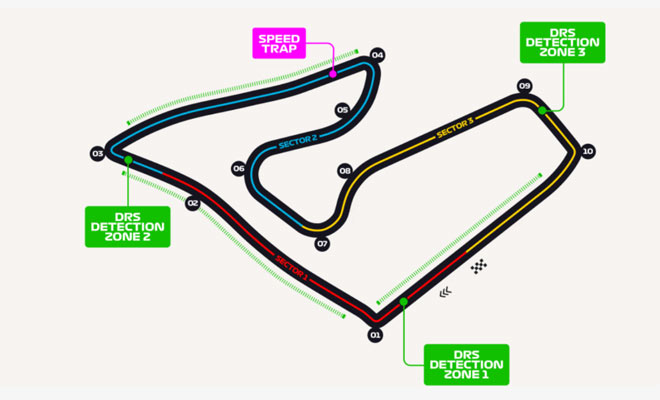Having been a regular feature in the Formula 1 World Championship, the Austrian race has experienced multiple phases of participation, spanning from 1964, then from 1970 to 1987, once more from 1997 to 2003, and continuously since 2014.
In 1964, the Austrian Grand Prix debuted in the Formula 1 World Championship on a track located on an old disused airfield in Zeltweg. However, critics dismissed the race for being harsh on cars and lacking driving appeal, leading to no repetition.

Returning in 1969 as an endurance event, the race took place near Zeltweg in the municipality of Spielberg on a circuit named Österreichring. Österreichring quickly became a favorite among drivers with its long, fast curves and elevation changes. The Austrian Grand Prix rejoined Formula 1 in 1970, with the endurance event continuing as the 1,000 kilometers of Zeltweg. However, by the mid-1980s, the track was considered outdated and dangerous for modern F1 cars. Safety concerns arose after incidents like Andrea De Cesaris’ somersaults in 1985 and Stefan Johansson hitting a deer in 1987, ultimately condemning the circuit.
After significant modernization and a name change to A1-Ring, the circuit returned to the calendar from 1997 to 2003. While not as demanding as the original, the A1-Ring still provided overtaking opportunities and exciting races.
The Austrian Grand Prix reappeared on the Formula 1 calendar in 2014, using the same layout as before but now named after its current owner, Red Bull, following partial demolition and reconstruction.
A1-Ring – Austrian Grand Prix F1
Renovating in 1995 and 1996 to modernize the Österreichring, the track underwent a revamp, allowing the race to resume in 1997. Renamed A1-Ring due to sponsorship, Spielberg officially became the designated location for the Grand Prix, situated on the municipal territory.
Hermann Tilke spearheaded the redesign, eliminating the long, sweeping corners, retaining modified features like the Texaco Bends, Hella-Licht chicane, Flatschach, Dr. Tiroch curve, and the initial segment of the uphill backstretch. The Bosch-Kurve was replaced with a direct bypass leading to the second half of the fast backstretch. The 2002 event gained notoriety when Ferrari instructed Rubens Barrichello to concede his victory to Michael Schumacher, resulting in negative publicity. Despite being a consistent fixture on the calendar, the A1-Ring hosted its final race in 2003.
Austrian Grand Prix F1 Austrian Grand Prix F1
You may also like – Canadian Grand Prix